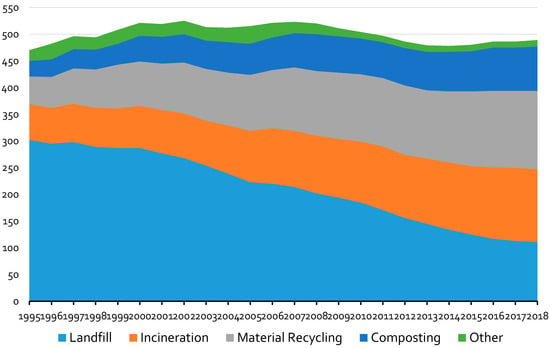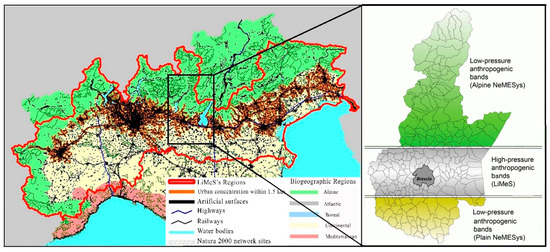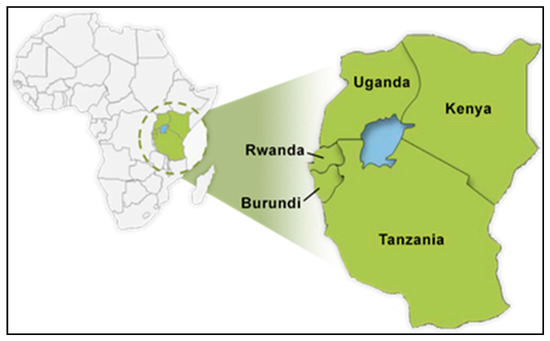Sustainability Challenges for Medium-Size Urban Systems
(Closed)
Share This Topical Collection
Editor
 Prof. Carmine Trecroci
Prof. Carmine Trecroci
 Prof. Carmine Trecroci
Prof. Carmine Trecroci
E-Mail
Website
Collection Editor
Dept. of Economics and Management, University of Brescia, Via San Faustino 74/b, 25122 Brescia, Italy
Interests: environmental economics; environmental sciences; empirical asset pricing; macroeconomic policies; macroeconomic fluctuations; quantitative monetary and financial history
Topical Collection Information
Dear Colleagues,
Urbanization has substantial, complex and often irreversible impacts on the biosphere. The growth of urban ecosystems implies significant transformation and concentration of natural and environmental resources. At the same time, the shape and configuration of urban life are amongst the most important determinants of environmental stress.
Large urban systems very often aggregate small and medium-size cities that have peculiar environmental and socio-economic characteristics. On the other hand, natural and technological constraints, lack of homogeneity, economies of scale and agglomeration, networking effects and transportation costs all make environmental problems and their solutions more challenging than in conventional models that do not account for spatial and homogeneity issues. Therefore, studies in this Topical Collection are expected to address the above issues and their implications. Research topics include, but are not exclusive to:
- Environmental and sustainability assessment
- Integrated analysis, measurement and management of risks and impacts
- Integrated ecologic-economic modelling at scales from local to regional to global
- Ecologically integrated technology
- Process modification for pollution prevention
- Economics of environmental management
- Study of environmental behaviour and responses to regulation
- Transport and fate of pollutants in the environment
- Sustainable agriculture and development
- Remediation of contaminated sites
- Improved energy efficiency
- Waste treatment and disposal
- Analysis of environmental policy
- Impact of climate change
Prof. Carmine Trecroci
Collection Editor
Manuscript Submission Information
Manuscripts should be submitted online at www.mdpi.com by registering and logging in to this website. Once you are registered, click here to go to the submission form. Manuscripts can be submitted until the deadline. All submissions that pass pre-check are peer-reviewed. Accepted papers will be published continuously in the journal (as soon as accepted) and will be listed together on the collection website. Research articles, review articles as well as short communications are invited. For planned papers, a title and short abstract (about 100 words) can be sent to the Editorial Office for announcement on this website.
Submitted manuscripts should not have been published previously, nor be under consideration for publication elsewhere (except conference proceedings papers). All manuscripts are thoroughly refereed through a single-blind peer-review process. A guide for authors and other relevant information for submission of manuscripts is available on the Instructions for Authors page. Sustainability is an international peer-reviewed open access semimonthly journal published by MDPI.
Please visit the Instructions for Authors page before submitting a manuscript.
The Article Processing Charge (APC) for publication in this open access journal is 2400 CHF (Swiss Francs).
Submitted papers should be well formatted and use good English. Authors may use MDPI's
English editing service prior to publication or during author revisions.
Keywords
- integrated assessment
- environmental assessment
- policy, regulation and impact
- waste management
- transportation
- water management
- air quality
- energy management
- remediation
Published Papers (6 papers)
Open AccessArticle
Re-Naturing the City: Linking Urban Political Ecology and Cultural Ecosystem Services
by
Antonella Pietta and Marco Tononi
Cited by 14 | Viewed by 3996
Abstract
In the last few decades European industrial cities have experienced major transformations which have implied the need to rethink the role of nature. Re-naturing the city, reconnecting urban planning and nature and enhancing sustainability, means taking into account ecosystems and biodiversity through a
[...] Read more.
In the last few decades European industrial cities have experienced major transformations which have implied the need to rethink the role of nature. Re-naturing the city, reconnecting urban planning and nature and enhancing sustainability, means taking into account ecosystems and biodiversity through a social approach to nature which reconsiders nature as a social product and re-examines city–nature relationships, the way Urban Political Ecology (UPE) suggests. This paper focuses on the Brescia Quarry Park, a suburban space that until just a few years ago was characterized by mining activities. This area has now been transformed into a re-naturalized area and is projected to become one of Europe’s largest re-naturalized protected urban areas. These transformations are signs of a profound change in the urban metabolism. In fact, the community has struggled for many years for the recognition of the value of the area in ecological and cultural terms. Therefore, an approach was adopted based on Urban Political Ecology, which is useful to study how the socio–natural relationships change and how an exploited and degraded land can become a relevant natural area from the local community’s point of view. This approach also allowed us to study conflicts due to unequal power relations and strategies developed by the community to reduce these conflicts. Particular interest was given to the participatory processes which have driven these transformations and to the role played by the different actors involved through top-down and bottom-up approaches. So, we decided to combine UPE and participatory action research—PAR and create a participatory map of the Cultural Ecosystem Services (CES) in the Park. Attention was given to understanding the practices of the stakeholders and benefits for the community. This involvement allowed us to represent the complexity of the re-naturalized urban landscape which was analyzed through the changes in natural, urban and rural features that emerged. During the process, the interaction between citizens and experts was fundamental in co-producing an analysis of the placemaking of urban landscapes and in revealing the socio–ecological interactions of the stakeholders with these places. The results of the mapping process represent a first step towards promoting sustainable environmental planning and management based on the involvement and empowerment of the local population.
Full article
►▼
Show Figures
Open AccessArticle
Solids Removal Efficiency of a Sedimentation Tank in a Peri-Urban Catchment
by
Salvatore Falco, Giuseppe Brunetti, Giovanna Grossi, Mario Maiolo, Michele Turco and Patrizia Piro
Cited by 3 | Viewed by 2852
Abstract
At the outlet of the Vermicelli catchment—a peri-urban area located in the campus of University of Calabria (Cosenza, Southern Italy)—a sedimentation tank is located, aiming at collecting the basin surface runoff and improve its quality. First, experimental results of the treatment effects are
[...] Read more.
At the outlet of the Vermicelli catchment—a peri-urban area located in the campus of University of Calabria (Cosenza, Southern Italy)—a sedimentation tank is located, aiming at collecting the basin surface runoff and improve its quality. First, experimental results of the treatment effects are here presented and analyzed. In addition, a monitoring campaign was conducted in order to characterize the particles transported by surface runoff and to determine the treatment efficiency of the tank. The analysis showed the presence of a pollutant load in the surface runoff of the Vermicelli basin and provided information on its particle-size distribution (PSD). Results were considered in terms of the treatment efficiency of the sedimentation tank, showing a good overall removal efficiency value, together with a high variability of the removal sedimentation efficiency. This variability is mainly due to the different grain size of the suspended solids and the characteristics of the rainfall event.
Full article
►▼
Show Figures
Open AccessArticle
Waste-to-Energy in the EU: The Effects of Plant Ownership, Waste Mobility, and Decentralization on Environmental Outcomes and Welfare
by
Laura Levaggi, Rosella Levaggi, Carmen Marchiori and Carmine Trecroci
Cited by 32 | Viewed by 5443
Abstract
Waste-to-energy (WtE) could prevent the production of up to 50 million tons of CO
2 emissions that would otherwise be generated by burning fossil fuels. Yet, support for a large deployment of WtE plants is not universal because there is a widespread concern
[...] Read more.
Waste-to-energy (WtE) could prevent the production of up to 50 million tons of CO
2 emissions that would otherwise be generated by burning fossil fuels. Yet, support for a large deployment of WtE plants is not universal because there is a widespread concern that energy from waste discourages recycling practices. Moreover, incineration plants generate air pollution and chemical waste residuals and are expensive to build compared to modern landfills that have appropriate procedures for the prevention of leakage of harmful gasses. In the context of the EU, this paper aims to provide a picture of the actual role of WtE as a disposal option for municipal solid waste (MSW), enabling it to be utilized as a source of clean energy, and to address two important aspects of the debate surrounding the use of WtE; namely, (i) the relationship between WtE and recycling, and (ii) the effects of decentralization, waste mobility, and plant ownership. Finally, it reviews the role of the EU as a supranational regulator, which may allow the lower government levels (where consumer preferences are better represented) to take decisions, while taking spillovers into account.
Full article
►▼
Show Figures
Open AccessReview
Review of the Reuse Possibilities Concerning Ash Residues from Thermal Process in a Medium-Sized Urban System in Northern Italy
by
Ahmad Assi, Fabjola Bilo, Alessandra Zanoletti, Jessica Ponti, Andrea Valsesia, Rita La Spina, Laura E. Depero and Elza Bontempi
Cited by 28 | Viewed by 3630
Abstract
This review paper reports a detailed characterization of some combustion or incineration residues and by-products produced in a medium-sized city in Northern Italy. The municipal solid waste incineration (MSWI) generates fly ash, which is a toxic waste. Coal fly ash (CFA) and flue
[...] Read more.
This review paper reports a detailed characterization of some combustion or incineration residues and by-products produced in a medium-sized city in Northern Italy. The municipal solid waste incineration (MSWI) generates fly ash, which is a toxic waste. Coal fly ash (CFA) and flue gas desulfurization (FGD) derive from the thermoelectric coal plant located in the same city. Along with these ashes, silica fume and rice husk ash are also considered for the stabilization of fly ash based on their amorphous silica content with the aim to convert them into an inert material. The characterization of all the investigated ashes was performed using different techniques: X-ray diffraction, total reflection X-ray fluorescence, scanning electron microscopy, and transmission electron microscopy. The aim of this work is to describe the reuse possibilities that were proposed for these ashes, which were determined also on the basis of their structural properties. Several possible applications of the investigated ashes are proposed, and the most suitable reuse of stabilized fly ash samples seems to be the production of sustainable plastic composites. This paper shows that the reuse of the by-product materials can allow natural resources to be preserved following the principles of a circular economy.
Full article
►▼
Show Figures
Open AccessEditor’s ChoiceArticle
Spatial Planning Policy for Sustainability: Analysis Connecting Land Use and GHG Emission in Rural Areas
by
Michele Pezzagno, Anna Richiedei and Maurizio Tira
Cited by 16 | Viewed by 3686
Abstract
Anthropogenic greenhouse gas (GHG) emissions are the highest they have ever been and the climate change they have triggered is having consequences on both human and natural systems. The aim of the paper is to demonstrate that an integrated reading of urban and
[...] Read more.
Anthropogenic greenhouse gas (GHG) emissions are the highest they have ever been and the climate change they have triggered is having consequences on both human and natural systems. The aim of the paper is to demonstrate that an integrated reading of urban and rural land uses in relation to GHG emissions is feasible and useful at the regional level in order to reach emissions reduction. The Po Valley in Italy is an emblematic case study because its features are unique in Europe for high population density, urban sprawl, intensive agriculture, livestock management and consequently high emission levels. The methodology examines the total GHG emissions in relation to urban and rural areas. Between 2000 and 2010, the trend of CO
2-equivalent emissions for the macro-regions of Italy shows a national decrease in contrast to the area of our case study which has seen a steady increase and growth trend over time. The paper analyzes some possible reasons linked to this anomaly, and it presents an estimation of the CO
2-equivalent emissions related to the use of agricultural land. The main output of the paper is a new overview for research that aims to propose integrated solutions and policies at the local level with a wider vision focused on GHG emission knowledge, supported by Strategic Environmental Assessment.
Full article
►▼
Show Figures
Open AccessArticle
Status of Waste Management in the East African Cities: Understanding the Drivers of Waste Generation, Collection and Disposal and Their Impacts on Kampala City’s Sustainability
by
Shamim Aryampa, Basant Maheshwari, Elly Sabiiti, Najib L Bateganya and Brian Bukenya
Cited by 29 | Viewed by 8013
Abstract
The factors that influence waste generation and management vary with country but there is a gap in the availability of waste data in Africa limiting the assessment of these factors for sustainability. Hence, this study was aimed at evaluating the drivers of waste
[...] Read more.
The factors that influence waste generation and management vary with country but there is a gap in the availability of waste data in Africa limiting the assessment of these factors for sustainability. Hence, this study was aimed at evaluating the drivers of waste generation, collection and disposal, and their impact on sustainability of Kampala as compared to the East African Community (EAC). Waste generation in Kampala was calculated using recorded waste collection efficiencies while data for Nairobi and Dar es Salaam was obtained from existing literature. Waste quantities for disposal were recorded daily at Kiteezi landfill from 2011 to 2017. Results showed that the major drivers of waste generation, collection and disposal in the EAC are population growth, vehicle capacity and the need for disposal respectively. Waste generation rate in Kampala increased from 0.26 to 0.47 kg/capita/day and the annual waste quantity increased significantly (
p < 0.5) by 48% from 227,916 to 481,081 tons corresponding to a 54% population increase. Waste collection efficiency increased from 30% to 64% and hence waste for disposal increased significantly (
p < 0.5), with a mean of 15,823 tons/month; but varied significantly (
p < 0.5) with the city division. The most (5120 tons) and least (3472 tons) waste per month was collected from the Central and Nakawa divisions respectively. Additionally, Kampala Capital City Authority collected significantly more waste than private collectors for all study years. Waste is disposed of at the Kiteezi landfill despite exhausted capacity. Future projections showed that by 2030, annual waste would increase by approximately 60% for Kampala and Nairobi and by 74% for Dar es Salaam. Dar es Salaam generated the highest amount of waste, five times more than Kampala. More investment needs to be made towards the reduction of waste disposal and strategies developed for the reuse and recycling of waste.
Full article
►▼
Show Figures











